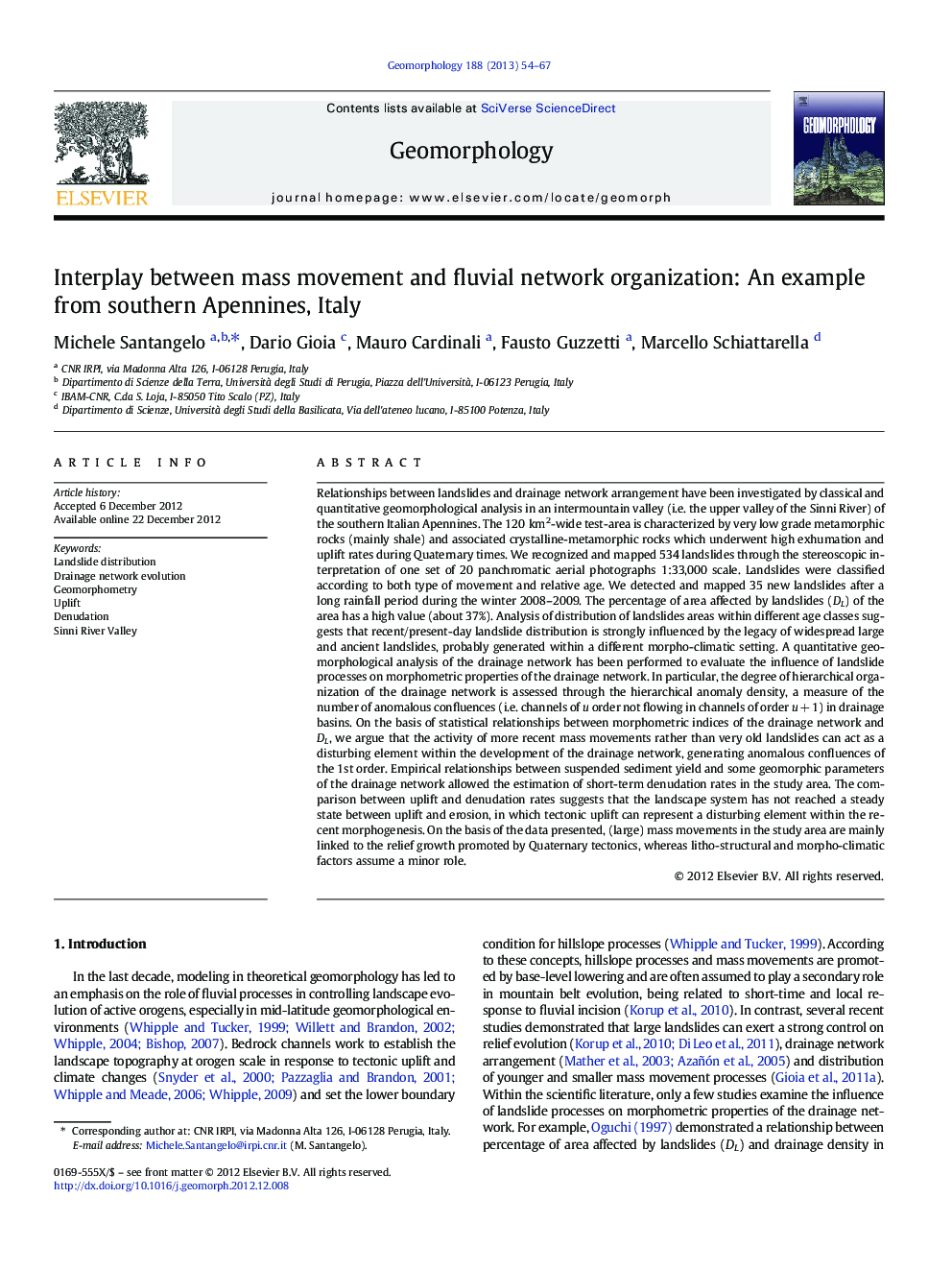| کد مقاله | کد نشریه | سال انتشار | مقاله انگلیسی | نسخه تمام متن |
|---|---|---|---|---|
| 4684927 | 1635461 | 2013 | 14 صفحه PDF | دانلود رایگان |
Relationships between landslides and drainage network arrangement have been investigated by classical and quantitative geomorphological analysis in an intermountain valley (i.e. the upper valley of the Sinni River) of the southern Italian Apennines. The 120 km2-wide test-area is characterized by very low grade metamorphic rocks (mainly shale) and associated crystalline-metamorphic rocks which underwent high exhumation and uplift rates during Quaternary times. We recognized and mapped 534 landslides through the stereoscopic interpretation of one set of 20 panchromatic aerial photographs 1:33,000 scale. Landslides were classified according to both type of movement and relative age. We detected and mapped 35 new landslides after a long rainfall period during the winter 2008–2009. The percentage of area affected by landslides (DL) of the area has a high value (about 37%). Analysis of distribution of landslides areas within different age classes suggests that recent/present-day landslide distribution is strongly influenced by the legacy of widespread large and ancient landslides, probably generated within a different morpho-climatic setting. A quantitative geomorphological analysis of the drainage network has been performed to evaluate the influence of landslide processes on morphometric properties of the drainage network. In particular, the degree of hierarchical organization of the drainage network is assessed through the hierarchical anomaly density, a measure of the number of anomalous confluences (i.e. channels of u order not flowing in channels of order u + 1) in drainage basins. On the basis of statistical relationships between morphometric indices of the drainage network and DL, we argue that the activity of more recent mass movements rather than very old landslides can act as a disturbing element within the development of the drainage network, generating anomalous confluences of the 1st order. Empirical relationships between suspended sediment yield and some geomorphic parameters of the drainage network allowed the estimation of short-term denudation rates in the study area. The comparison between uplift and denudation rates suggests that the landscape system has not reached a steady state between uplift and erosion, in which tectonic uplift can represent a disturbing element within the recent morphogenesis. On the basis of the data presented, (large) mass movements in the study area are mainly linked to the relief growth promoted by Quaternary tectonics, whereas litho-structural and morpho-climatic factors assume a minor role.
► We carried out a detailed landslide inventory through aerial photo-interpretation.
► We performed a quantitative geomorphic analysis of mass movement and fluvial network.
► Regular development of the fluvial network is disturbed by diffused landslides.
► Tectonic uplift can represent a disturbing element within the recent morphogenesis.
Journal: Geomorphology - Volume 188, 15 April 2013, Pages 54–67
